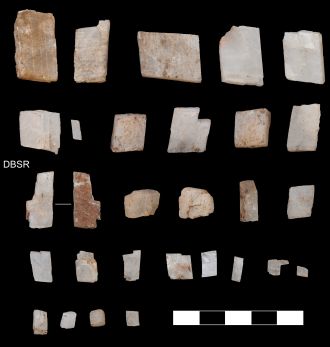Early humans in the Kalahari were innovative
Inland Africa reveals ancient evidence of Homo sapiens innovation.
New archaeological evidence from Africa’s interior challenges notions that the emergence of Homo sapiens relied on adaptations to coastal environments, according to an international team of scientists.
Excavations from a rock shelter at Ga-Mohana Hill on the edge of South Africa’s Kalahari Desert revealed signs of complex human behaviours 105,000 years ago, paralleling similar discoveries on the coast around the same time.
“The origin of our species was more complicated than we like to think,” says Jayne Wilkins from Griffith University, lead author of a paper published in the journal Nature.
One of the most important finds by her team was a collection of 22 calcite crystals.
“Crystals have had spiritual significance around the world for many time periods,” Wilkins explains. “I think the crystals at Ga-Mohana were probably collected for some of the same reasons that people collect crystals today and throughout prehistory – for their visually striking properties and beauty, and perhaps to play a role in ritual activities.

Crystals collected by early Homo sapiens in the
southern Kalahari 105,000 years ago.
Credit: Jayne Wilkins
“So, people in the Kalahari were not ‘archaic’ or less complex than humans living at the coast at the same time.”
Wilkins had previously worked on coastal sites with her collaborators but remained curious about the archaeological record from Middle Stone Age sites further inland, of which very little is known.
More:
https://cosmosmagazine.com/history/archaeology/early-humans-in-the-kalahari-were-innovative/
